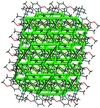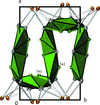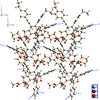issue contents
June 2020 issue

Cover illustration: Recent developments in all aspects of structure determination by X-ray diffraction have led to unprecedented automation and speed. A comprehensive overview of the perils associated with such automation is given, along with a series of tips and tricks for data collection, processing, structure solution, refinement and presentation. These serve as a handy guide for novices encountering non-routine structures and a timely reminder for experienced crystallographers. This paper is the third in a series derived from lectures at a recent microsymposium entitled `Teaching new dogs old tricks' presented at the 2019 ECM in Vienna. See: Linden [Acta Cryst. (2020). E76, 765-776].
research communications
















































































 journal menu
journal menu


























































